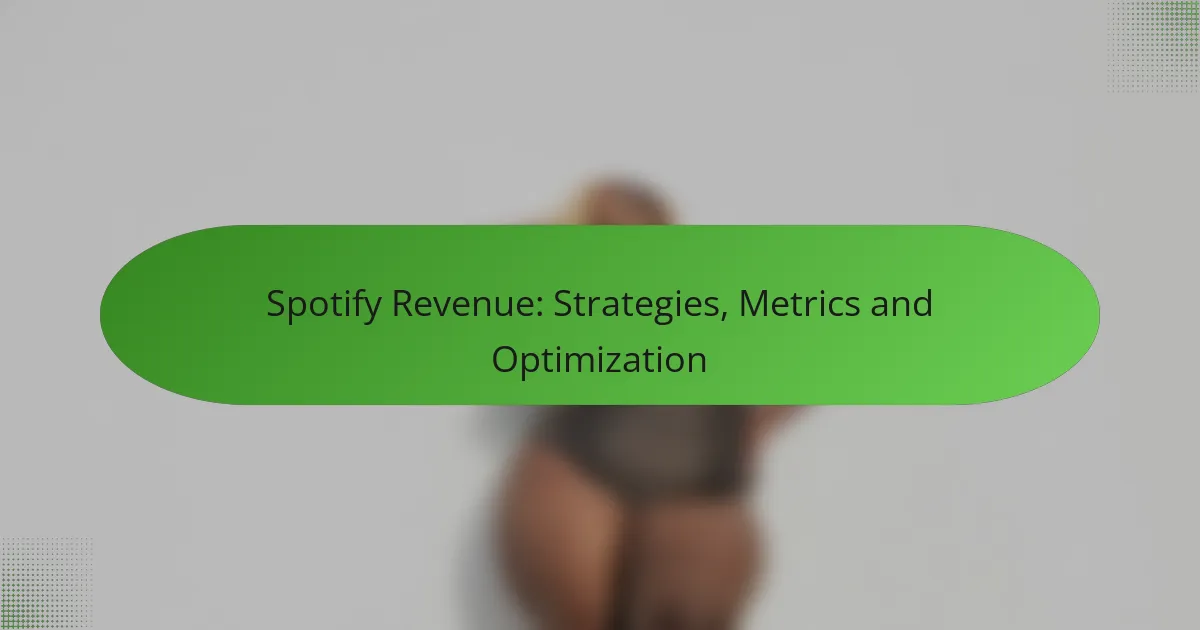Spotify’s revenue model is multifaceted, primarily driven by subscription fees, advertising, partnerships, and merchandising. Key metrics such as Monthly Active Users, Average Revenue Per User (ARPU), and the Conversion Rate from Free to Premium are vital for assessing its financial health and growth prospects. To further optimize revenue, strategies should concentrate on user retention, ad targeting, and global expansion.

How Does Spotify Generate Revenue?
Spotify generates revenue primarily through subscription fees, advertising, partnerships, and merchandising. Each of these revenue streams plays a crucial role in the platform’s overall financial success.
Subscription Fees
Subscription fees are a significant source of revenue for Spotify, with users paying monthly for ad-free access to music and podcasts. The platform offers various subscription tiers, including individual, family, and student plans, which cater to different user needs and budgets.
Typically, subscription prices range from around $10 to $15 per month in the U.S. and may vary in other countries. Offering discounts for families or students can attract more users and increase overall revenue.
Advertising Revenue
Spotify also generates revenue through advertising, particularly from its free tier users. Advertisers pay to reach this audience, and Spotify uses targeted ads based on user data to maximize effectiveness.
Ad formats include audio ads, display ads, and sponsored playlists, allowing brands to engage with listeners in various ways. This revenue stream can fluctuate based on market demand and user engagement levels.
Partnerships and Collaborations
Partnerships and collaborations with brands and other companies enhance Spotify’s revenue potential. These partnerships can include exclusive content deals, promotional campaigns, or bundled offers with other services.
For example, collaborations with mobile carriers or tech companies can provide users with discounted subscriptions, while exclusive album releases can draw in new subscribers and increase brand visibility.
Merchandising and Live Events
Merchandising and live events represent additional revenue avenues for Spotify. The platform has begun to integrate merchandise sales for artists directly into their profiles, allowing fans to purchase items easily.
Moreover, Spotify has ventured into promoting live events and concerts, which can generate ticket sales and enhance user engagement. This strategy not only boosts revenue but also strengthens the connection between artists and their audiences.
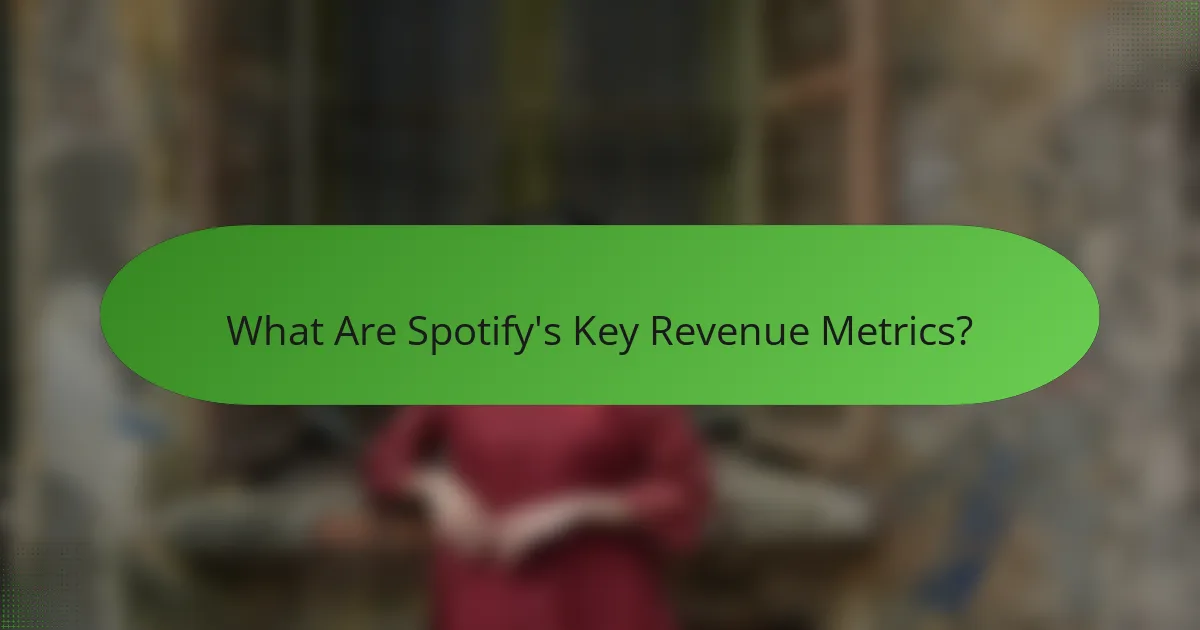
What Are Spotify’s Key Revenue Metrics?
Spotify’s key revenue metrics include Monthly Active Users, Average Revenue Per User (ARPU), and the Conversion Rate from Free to Premium. These metrics are essential for understanding the platform’s financial performance and growth potential.
Monthly Active Users
Monthly Active Users (MAUs) represent the total number of unique users who engage with Spotify within a month. This metric is crucial as it indicates the platform’s reach and user engagement levels.
To optimize MAUs, Spotify focuses on user acquisition strategies, such as targeted marketing campaigns and partnerships. Maintaining a steady growth in MAUs is vital for attracting advertisers and increasing overall revenue.
Average Revenue Per User (ARPU)
Average Revenue Per User (ARPU) measures the revenue generated per user over a specific period, typically monthly. This metric helps assess the effectiveness of pricing strategies and user monetization efforts.
Spotify can enhance ARPU by offering tiered subscription plans and exclusive content to premium users. A higher ARPU indicates better monetization, which is essential for sustaining the business model.
Conversion Rate from Free to Premium
The Conversion Rate from Free to Premium reflects the percentage of free users who upgrade to a paid subscription. This metric is critical for understanding how well Spotify can monetize its user base.
To improve this conversion rate, Spotify employs strategies such as offering free trials, personalized recommendations, and exclusive features for premium users. Monitoring this rate helps identify effective tactics and areas for improvement in user engagement and retention.
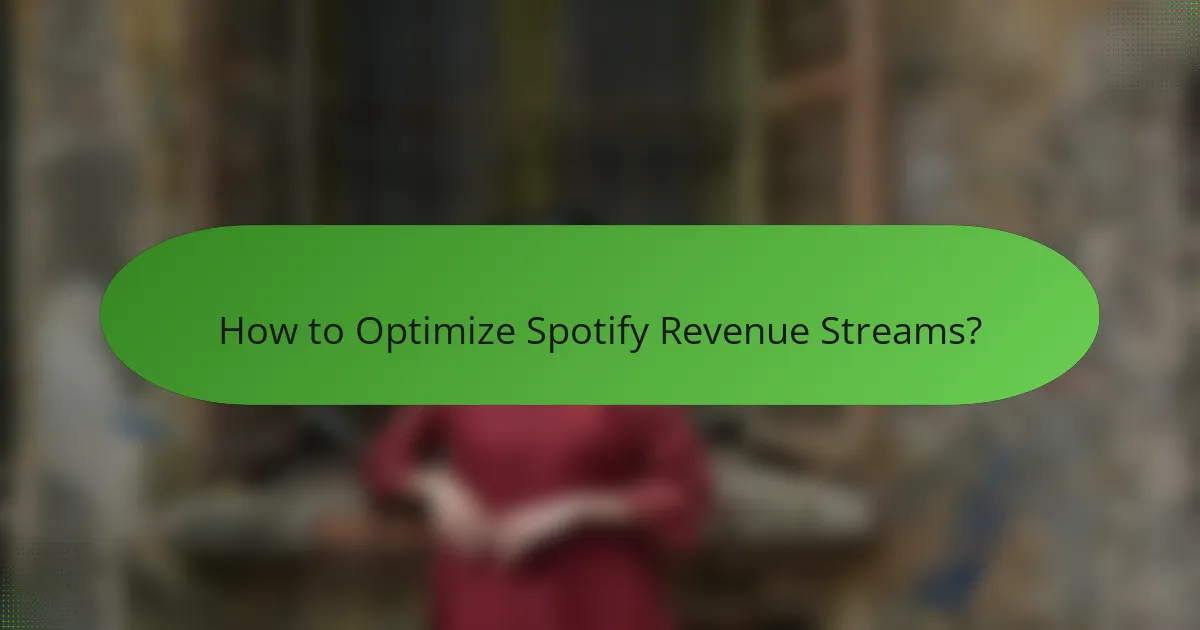
How to Optimize Spotify Revenue Streams?
To optimize Spotify revenue streams, focus on enhancing user retention, improving ad targeting, and expanding global reach. Each strategy plays a crucial role in maximizing income from subscriptions and advertising.
Improving User Retention
Improving user retention is essential for sustaining revenue on Spotify. Engaging users through personalized playlists, exclusive content, and interactive features can significantly reduce churn rates.
Consider implementing loyalty programs that reward long-term subscribers with discounts or special access. Regularly updating the app with new features and ensuring a seamless user experience also contribute to keeping users active.
Enhancing Ad Targeting
Enhancing ad targeting can lead to higher revenue from advertisers on Spotify. By utilizing data analytics, Spotify can deliver more relevant ads to users, increasing engagement and click-through rates.
Advertisers are willing to pay a premium for targeted ads, so investing in advanced algorithms and user segmentation is crucial. Regularly updating targeting criteria based on user behavior and preferences can optimize ad performance.
Expanding Global Reach
Expanding global reach is vital for increasing Spotify’s user base and revenue. Entering new markets allows Spotify to tap into diverse demographics and varying subscription models.
When expanding, consider localizing content and marketing strategies to fit cultural preferences. Offering flexible pricing models, such as lower-cost subscriptions in emerging markets, can attract a broader audience and boost overall revenue.
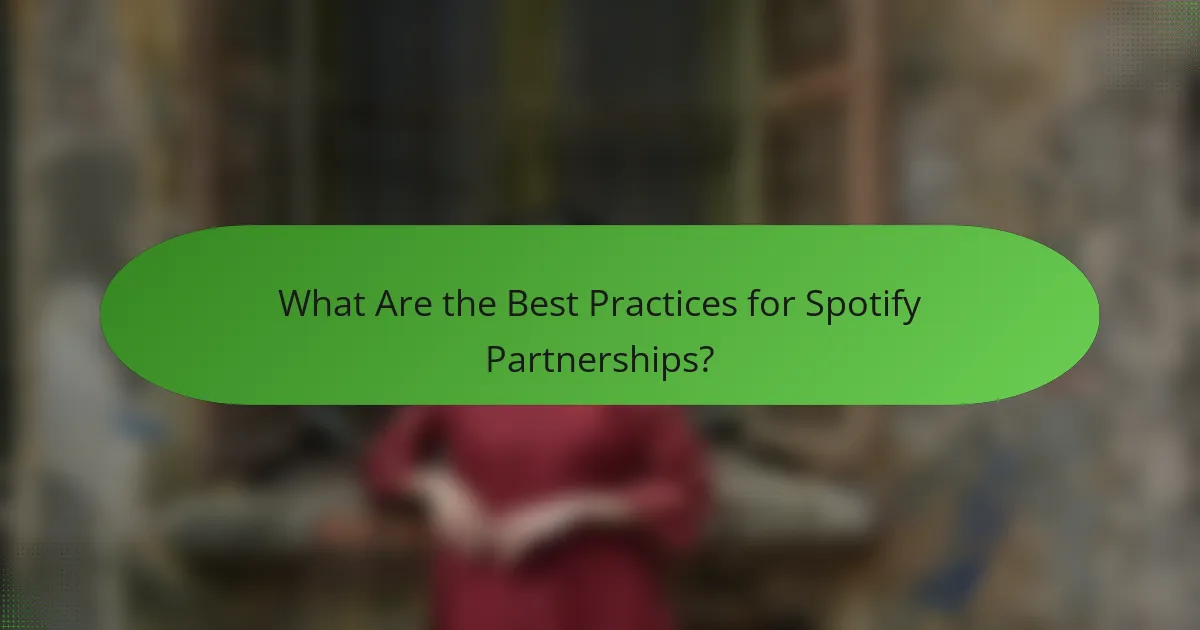
What Are the Best Practices for Spotify Partnerships?
Effective Spotify partnerships leverage collaboration to enhance visibility and revenue. Best practices include aligning with relevant influencers, securing brand sponsorships, and utilizing cross-promotion strategies to maximize reach.
Collaborating with Influencers
Partnering with influencers can significantly boost your Spotify presence. Choose influencers whose audience aligns with your target demographic, ensuring authentic engagement. For instance, a music artist might collaborate with a popular social media personality to create content that showcases their latest tracks.
When selecting influencers, consider their follower count, engagement rates, and content style. Aim for micro-influencers with dedicated audiences, as they often yield higher engagement compared to larger accounts. Establish clear expectations regarding deliverables and timelines to ensure a smooth collaboration.
Brand Sponsorships
Brand sponsorships provide a mutually beneficial arrangement where brands support your content in exchange for visibility. This can include sponsored playlists, exclusive content, or promotional events. Brands typically seek partnerships that resonate with their values and target audience.
To attract sponsors, create a media kit showcasing your listener demographics, engagement metrics, and past successful collaborations. Set competitive pricing based on your reach and influence, and be open to negotiating terms that benefit both parties.
Cross-Promotion with Other Platforms
Cross-promotion involves leveraging other platforms to drive traffic to your Spotify content. This can include sharing links on social media, embedding Spotify tracks in blogs, or collaborating with YouTube creators to feature your music. Each platform can introduce your work to new audiences.
Identify platforms where your target audience is active and create tailored content for each. Use analytics to track the effectiveness of your cross-promotion efforts, adjusting strategies based on what drives the most engagement. Avoid overwhelming users with too much promotion; instead, integrate your Spotify content naturally into their experience.
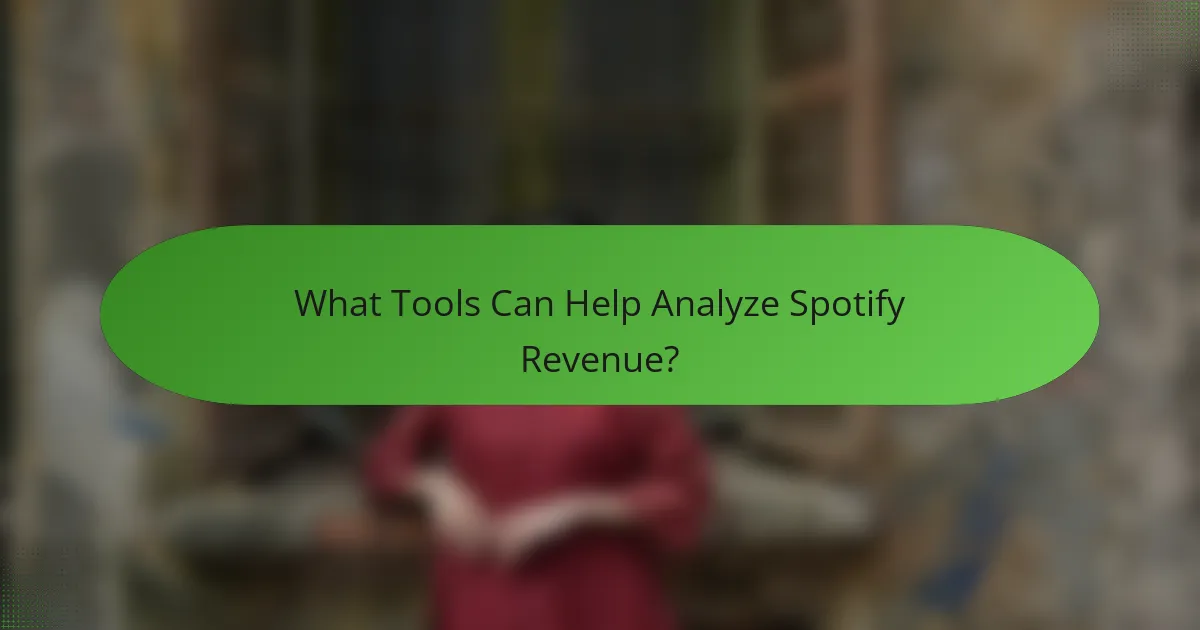
What Tools Can Help Analyze Spotify Revenue?
Several tools can effectively analyze Spotify revenue, providing insights into streaming performance and audience engagement. These tools help artists and labels understand their earnings, optimize their strategies, and make data-driven decisions.
Spotify for Artists
Spotify for Artists is a key tool for musicians and labels to track their revenue and performance metrics. It provides detailed analytics on streams, listener demographics, and playlist placements, allowing users to see how their music is performing in real-time.
By utilizing Spotify for Artists, users can access valuable insights such as the number of monthly listeners, total streams, and earnings estimates. This data can help artists identify trends, understand their audience better, and tailor their marketing efforts accordingly.
To maximize the benefits of Spotify for Artists, regularly check your analytics dashboard and compare your performance over time. Look for spikes in streams after releases or promotional campaigns, and adjust your strategies based on what resonates with your audience.
